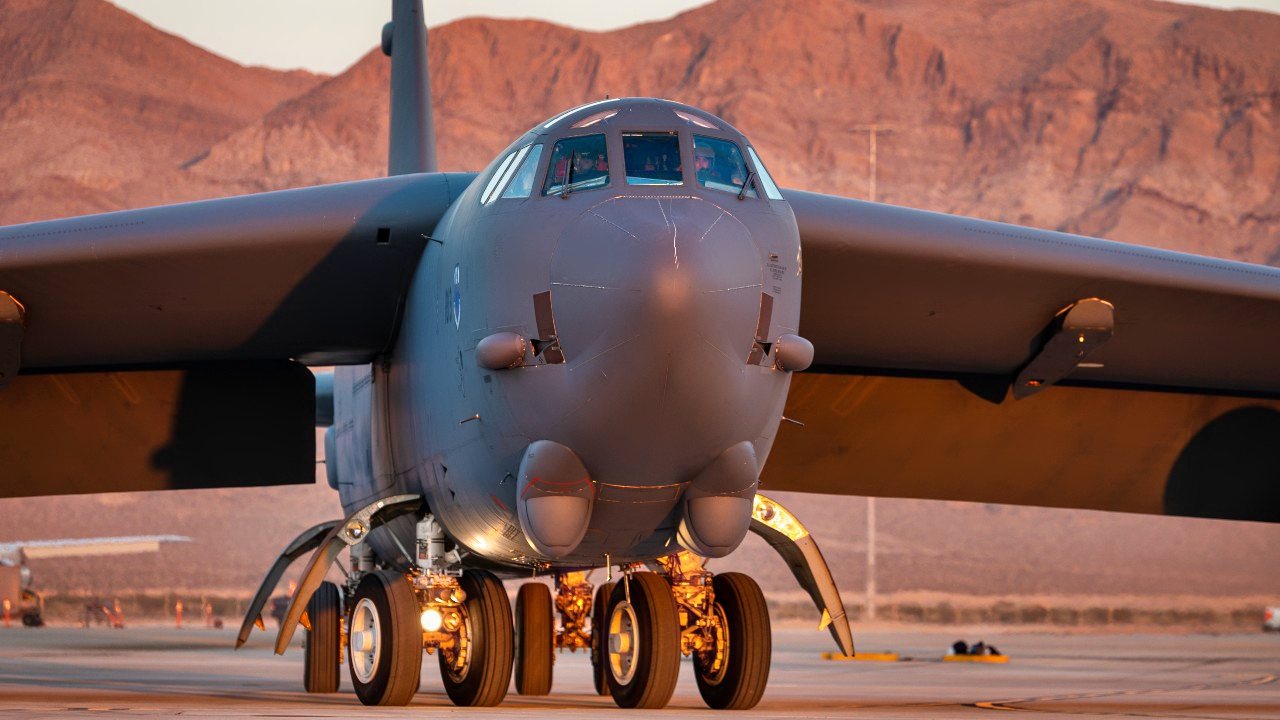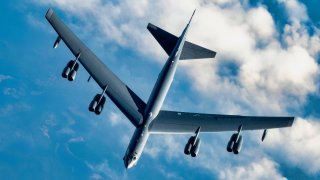If the Air Force Loves the B-52 Bomber So Much Why Not Build New Versions?
The U.S. Air Force’s B-52 Stratofortress has flown for seven decades and could serve until 2050, but the idea of building new B-52s is impractical.
What You Need to Know: The U.S. Air Force’s B-52 Stratofortress has flown for seven decades and could serve until 2050, but the idea of building new B-52s is impractical.

-While Russia has resumed production of similar bombers like the Tu-95 and Tu-160, the U.S. ceased B-52 production in the 1960s.
-Rebuilding the necessary infrastructure and production lines would be costly and unnecessary.
Why Building New B-52s Doesn’t Make Sense: The Aging Icon and Its Role in the Future
The United States Air Force has operated the venerable Boeing B-52 Stratofortress for seven decades, and it could see a full century of service before it is finally retired – meaning the final crews could be the great-grandchildren of the original operators of the long-range bomber.
The original B-52A made its maiden flight in 1954, while the B-52B officially entered service a year later. The last B-52H was delivered in October 1962, sixty-two years ago this month. A total of 744 were manufactured while 76 are still maintained by the Air Force with 58 considered operational with the 2nd Bomb Wing and 5th Bomb Wing, 18 are in the reserve forces of the 307th Bomb Wing, while another dozen are now in long-term storage the Davis-Monthan Air Force Base "Boneyard."
To keep the aging bombers flying, the Pentagon has literally invested billions of dollars, and the B-52s have received considerable upgrades that have included (or will include) new sensors, new crew workstations, improved cockpit layout, new engines, and even the addition of a privacy screen for the aircraft's lavatory.
A question making the rounds recently on aviation forums was why the U.S. doesn't build new B-52s if the platform is so good. The short answer would be a curt but polite, "Why would it?"
Russian Aircraft As An Example
The Russian Aerospace's Tupolev Tu-95 (NATO reporting name Bear) was developed around the same time as the B-52 and it remains in service – but with one notable difference. Production first began in the 1950s but was halted in the 1960s, before resuming in 1981 and continuing until 1993. Nearly all of the roughly fifty-five Tu-95s in service today were built in the decade of excess or later.
Moreover, the Tupolev Tu-160 "White Swan" (NATO reporting name Blackjack) has seen production starts and stops since 1984, and the Kremlin announced in August that the latest batch of the strategic bombers had been delivered.
The fact that Russia was able to restart production of the Tu-95 and continues to produce the Tu-160 would support the case for the U.S. building new B-52s.
Except, it really doesn't. The United States isn't Russia, which during the Soviet era preserved everything.
Production Lines Not in Place for B-52
Those 744 B-52s that were built during the Cold War rolled off assembly lines in Seattle, Washington, and Wichita, Kansas. Even if the buildings are still in place – which may or may not be the case – is a moot point. The production lines were certainly refurbished, recycled, scrapped, or sold off decades ago.
It is unlikely all of the original specs and blueprints for building the factories have been archived, and many of the firms and dozens of subcontractors that build the equipment used to manufacture the aircraft are likely out of business or have merged and been absorbed by other companies. Aerospace firms have continued to build the Cold War-era F-15 and F-16 fighters because production never stopped – and there was international demand. That wasn't the case with the Stratofortress.
The facilities no longer exist, and it would take years just to set up the infrastructure again. Even if it could be done, the aircraft is still 70 years old. Newer and more aircraft have been produced.
It is true that the Air Force maintains its aging fleet, but that also requires a considerable endeavor.

Boeing and Rolls-Royce, the latter being the maker of the new engines, have had to use 3D printing techniques and advanced design procedures to simply deal with the installation of the new power plants. It has been noted that literally no one who worked on the original development of the bombers was even able to offer insight, as they're long retired and most are probably in the air production facility in the sky (as in have passed away).
Moreover, the U.S. Air Force is now conducting testing of the B-21 Raider, the future backbone and workhorse of the bomber fleet. It will replace the B-1B Lancer and B-2 Spirit and eventually even the B-52. It may also likely be the final long-range strategic bomber the Air Force ever operates as advances in unmanned technology will take flight.
That's the longer answer – which could be summed up concisely: building new B-52s would be like returning battleships to service. With enough money and resources, it could be done, but there is no reason. More modern platforms exist and the U.S. Air Force is looking beyond the B-52.
Next time let's discuss why the U.S. military doesn't just bring back the classic Colt .45 semi-automatic pistol!
Author Experience and Expertise: Peter Suciu
Peter Suciu is a Michigan-based writer. He has contributed to more than four dozen magazines, newspapers, and websites with over 3,200 published pieces over a twenty-year career in journalism. He regularly writes about military hardware, firearms history, cybersecurity, politics, and international affairs. Peter is also a Contributing Writer for Forbes and Clearance Jobs. You can follow him on Twitter: @PeterSuciu. You can email the author: [email protected].
Image Credit: Creative Commons and/or Shutterstock.
From the Vault


